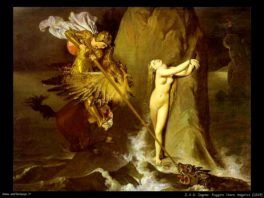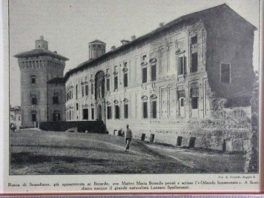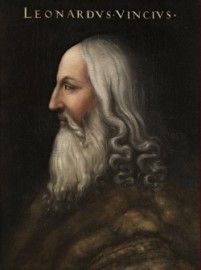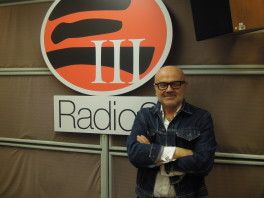 I bought this bronze statue of Buddha about 10 years ago, in Hollywood Road, because I was strongly attracted by his face and by the gesture (Abhaya Mudra) of his right hand, meaning ‘do not be afraid’. 30 cm tall, his face was that of an Alien, a face which I had never seen before. Even the suit he is wearing looks that of a spaceman, then…that strange hairstyle, where is it from?
I bought this bronze statue of Buddha about 10 years ago, in Hollywood Road, because I was strongly attracted by his face and by the gesture (Abhaya Mudra) of his right hand, meaning ‘do not be afraid’. 30 cm tall, his face was that of an Alien, a face which I had never seen before. Even the suit he is wearing looks that of a spaceman, then…that strange hairstyle, where is it from?
It is certainly very old, given the lightness of the metal, due to corrosion, the strong patina with red and blue oxidation with traces of ancient gold gilding. I think that it should be dated well before the 8th century. After I bought it I have studied books and magazines dealing with Buddha’s images but I have been unable to pinpoint a date and a place of manufacture. It is quietly looking down from my library, casting a benign spell on the beholders, and I call it the ‘cosmic Buddha’.
In 2016 UFO hunters around the world were delighted to have spotted a rock on Mars which looks like a statue of Lord Buddha. Scott C Waring of UFO Sightings Daily said: ‘This photo alone should be enough to convince the United Nations that intelligent life once existed on Mars. Nasa doesn’t want anyone to know the truth, because they will be asked to share the info and technology that they have found.” The problem is that, before and after that, almost anything was spotted in those photos, using a bit of imagination. (1)
Casting aside sightings on Mars, we should note that the possibility of the existence of Aliens is a matter of fact for all Buddhists, not a strange phenomenon. Buddhist cosmology had always accepted the existence of millions of other worlds – a claim which did cost the life of Italian philosopher Giordano Bruno, burned at the stake in Rome, February 27, 1600 – inhabited worlds. Buddhist cosmology accepts that the Universe had existed for millions of years and it is continually regenerating: they think that after the end of our Universe, a new one will raise, with a new Buddha in it.
Their cosmology predates the one we find in the Bible and Buddhists even clam that Buddha spelled out a sort of quantum theory: the void or emptiness is the source of both material objects and energy.
In the Lotus Sutra – literally The White Lotus of the Sublime Dharma composed well before the I century AD – we read of the arrival of a sort of Alien named Gadgadasvara (Wonderful Voice) on a spaceship.
It was through deep meditation that Gadgadasvara was able to appear psychically on our planet, in front of the Buddha and his students. One of Buddha’s bodhisattva, Manjusri, asked about him. The Buddha replied that the visitor was a sage coming from another world.
Manjusri then asked if he could learn the same kind of space-travel meditation technique and if Gadgadasvara could visit them in flesh, not only in spirit. Gadgadasvara, so challenged, came to earth in his physical form (translating it into plain English):
accompanied by the noise of hundreds of thousands of musical instruments. He come to the earth after moving through the sky on a “tall tower.”
How he looked like?
His face showed eyes resembling blue lotuses, his body was gold colored…and sparkled with a luster.
The Buddha points out to them that Gadgadasvara has the ability to assume many different forms and to take on many other appearances, if he wishes to do so.
Gadgadasvara then listens to the Buddha’s sermon, finally giving him a polite “goodbye” and departs:
he again mounted the tower and with the noise of hundreds of thousands of musical instruments he returned to his own world
He comments that the place he come from, the land of that sahā world, is uneven and irregular and is filled with mud, stones, mountains, and filth.
Here is the original Chapter 23 of the Lotus Sutra:
Chapter XXIV – Bodhisattva Gadgadasvara
Thereupon, the Buddha Śākyamuni emitted a ray of light from his topknot (uṣṇīṣa), the mark of a great person, and also from the tuft of white hair between his eyebrows (ūrṇā), thus illuminating all the buddha worlds in the east equal to the sands of one hundred and eight myriads of koṭis of nayutas of Ganges Rivers. Beyond this number of worlds was the Buddha world called Vairocana raśmipratimaṇḍitā. In that world was the buddha named Kamala dala vimalanakṣatrarājasaṃkusumitābhijña, a Tathāgata, Arhat, Comp letely Enlightened, Perfect in Knowledge and Conduct, Well-Departed, Knower of the World, Unsurpassed, Tamer of Humans, Teacher of Devas and Humans, Buddha, Bhagavat. He was respectfully surrounded by a great assembly of countless, innumerable bodhisattvas, and he expounded his teaching for them. The ray of light emitted from the tuft of white hair between the eyebrows of Śākyamuni Buddha illuminated that entire world.
At that time, in the Buddha world of Vairocanaraśmiprati maṇḍitā there was a bodhisattva whose name was Gadgadasvara (Wonderful Voice). Having planted many roots of good merit over a long period, he paid homage to and closely attended immeasurable hundreds of thousands of myriads of koṭis of buddhas, and accomplished complete and profound wisdom. He attained the samādhis called dhvajā grakeyūra, saddharmapuṇḍarīka, vimala datta, nakṣa tra rā ja vikrīḍita, anilambha, jñānamudrā, sarva rutakauśalya, sarva- puṇyasamuccaya, prasādavatī, ṛddhi vikrīḍita, jñānolkā, vyū harāja, vimalaprabhāsa, vimalagarbha, apkṛtsna, and sūryāvarta. He thus attained great samādhis equal in number to the sands of hundreds of thousands of myriads of koṭis of Ganges Rivers. As the light of the Buddha Śākyamuni illuminated his body, he addressed the Buddha Kamaladalavimalanakṣatrarājasaṃkusu mi tā bhijña, saying: “O Bhagavat! I shall go to the sahā world, approach the Buddha Śākyamuni in homage and reverence, and see Bodhisattva Mañjuśrī, the Prince of the Dharma, as well as Bodhisattva Bhaiṣajyarāja, Bodhisattva Pradānaśūra, Bodhisattva Nakṣatra rāja saṃ ku su mitābhijña, Bodhisattva Viśiṣṭacāritra, Bodhisattva Vyūharāja, and Bodhisattva Bhaiṣa jya samud gata.”
Then the Buddha Kamaladalavimalanakṣatrarājasaṃkusu mitā bhijña addressed Bodhisattva Gadgadasvara, saying: “You must not despise that world nor think it inferior. O son of a virtuous family! The land of that sahā world is uneven and irregular and is filled with mud, stones, mountains, and filth. The Buddha is short of body, as are the bodhisattvas. By contrast, your body is forty-two thousand yojanas tall, and my body is six million eight hundred thousand yojanas tall. Your body is perfect in its bearing and illuminated most beautifully with hundreds of millions of merits. Yet, when you go there you must not despise that country nor think the Buddha, bodhisattvas, or the world itself inferior.”
The Bodhisattva Gadgadasvara addressed the Buddha, saying: “O Bhagavat! I am now going to the sahā world through the power of the Tathāgata, the carefree play of the transcendent powers of the Tathāgata, and the adornment of the qualities and wisdom of the Tathāgata.”
At that time Bodhisattva Gadgadasvara, without rising from his seat or moving his body, entered samādhi. Through the power of the samādhi he caused eighty-four thousand jeweled lotus flowers to appear on Mount Gṛdhrakūṭa, not far from the seat of the Dharma. The stems were made of Jambūnāda gold, the leaves of silver, the pistils of diamond, and the calyces of ruby.
On seeing these lotus flowers, Bodhisattva Mañjuśrī, the Prince of the Dharma, addressed the Buddha, saying: “O Bhagavat! Why has this marvel appeared? There are a great many millions of lotus flowers, whose stems are made of Jambūnāda gold, leaves of silver, pistils of diamond, and calyces of ruby.”
The Buddha Śākyamuni answered Mañjuśrī, saying: “The Bodhisattva Gadgadasvara wishes to come to this sahā world from the buddha world called Kamala dala vimala nakṣatra rāja saṃ kusum itā bhijña, together with eighty-four thousand bodhisattvas as his retinue. He approaches me in homage and reverence, wishing to make offerings and to hear the Lotus Sutra.”
Mañjuśrī asked the Buddha, saying: “O Bhagavat! What roots of good merit has he planted, and what merits has he practiced to attain his great transcendent powers? What kind of samādhi has he practiced? I entreat you to tell us the name of this samādhi. We wish to practice it with diligence. By practicing this samādhi we wish to see the shape, appearance, size, and manner of this bodhisattva. I entreat you, O Bhagavat, to use your transcendent powers and let us see the appearance of that bodhisattva.”
Then, the Buddha Śākyamuni spoke to Mañjuśrī, saying: “The Tathāgata Prabhūtaratna, who long ago entered parinirvāṇa, will manifest the signs for you.”
At that time the Buddha Prabhūtaratna addressed that bodhisattva, saying: “Come, O son of a virtuous family! Mañjuśrī, the Prince of the Dharma, wishes to see you.”
Thereupon Bodhisattva Gadgadasvara disappeared from his world and arrived together with eighty-four thousand bodhisattvas. In the worlds through which he passed, the land quaked in six ways, seven-jeweled lotus flowers rained everywhere, and hundreds of thousands of heavenly musical instruments sounded spontaneously without being played. The eyes of this bodhisattva were as large as blue lotus leaves. Even if hundreds of thousands of myriads of moons were gathered together they would not exceed the beauty of his countenance. His body was pure gold in color, adorned with immeasurable hundreds of thousands of merits, radiant with virtuous dignity, and brilliantly illuminated like the adamantine body of the god Nārāyaṇa. Having entered the seven-jeweled platform and ascended into the air, he flew above the earth at a height of seven tāla trees. Surrounded by respectful bodhisattvas, he arrived at Mount Gṛdhrakūṭa in this sahā world and descended from the seven-jeweled terrace. He came before the Buddha Śākyamuni with a necklace worth hundreds of thousands in his hand and bowed until his forehead reached the Buddha’s feet. He presented the necklace to the Buddha, saying: “O Bhagavat! The Buddha Kamaladalavimalanakṣatrarāja saṃ kusu mitā bhijña in quires of the Bhagavat:
Are you without illness or pain? Is your daily life pleasant? Are you at ease in practice? Is the world around you harmonious? Are your worldly affairs bearable? Is it easy to save sentient beings? Are they not filled with greed, anger, foolishness, avarice, and pride? Are they mindful of their parents? Do they respect śrāmaṇas? Do they not have false views or erring thoughts? Do they control the desires of their five senses? O Bhagavat! Do the sentient beings conquer māras? Has the Tathāgata Prabhūtaratna sitting in the seven-jeweled stupa long after his parinirvāṇa come here to hear the Dharma?
Furthermore, he inquired of the Tathāgata Prabhūtaratna, saying: “Are you at ease and without pain? O Bhagavat! Will your life be long and endured with patience? I now wish to see the body of the Buddha Prabhūtaratna. I entreat you, O Bhagavat, to manifest and show it to me.”
At that time the Buddha Śākyamuni said to the Buddha Pra bhūt ar atna: “This Bodhisattva Gadgadasvara wants to see you.”
Then, the Buddha Prabhūtaratna addressed Gadgadasvara, saying: “Splendid! Splendid! You have paid homage to the Buddha Śākya muni and heard the Lotus Sutra, and have come here in order to see Mañjuśrī and others.”
Thereupon Bodhisattva Padmaśrī addressed the Buddha, saying: “O Bhagavat! What roots of good merit has this Bodhisattva Gadgadasvara planted, and what merits has he practiced to attain these transcendent powers?”
The Buddha answered Bodhisattva Padmaśrī, saying: “In the past there was the Buddha called Meghadundubhisvararāja, a Tathāgata, Arhat, Completely Enlightened. His world was called Sarvarūpasaṃdarśana and the kalpa was called Priyadarśana. For a period of twelve thousand years Bodhisattva Gadgadasvara paid homage to the Buddha Meghadundubhisvararāja with a hundred thousand kinds of music and eighty-four thousand seven-jeweled bowls. As a result of his deeds he was born in the world of the Buddha Kamala dalavimalanakṣatrarājasaṃkusumitābhijña and has attained his transcendent powers. O Padmaśrī! What do you think about this? Is Bodhisattva Gadgada svara, who paid homage to the Buddha Meghadundubhisvararāja with music and jeweled vessels, someone unknown? Bodhisattva Mahāsattva Gad ga dasvara here present is one and the same. O Padmaśrī! Having closely and respectfully attended innumerable buddhas and planted roots of good merit over a long time, this Bodhisattva Gadgadas vara met hundreds of thousands of myriads of koṭis of nayutas of buddhas equal in number to the sands of the Ganges River. O Padmaśrī! You think that the body of Bodhisattva Gadgada svara exists only here; however, this bodhisattva manifests himself in various bodies. He has thus taught this sutra in many places for the sake of the sentient beings. Sometimes he has appeared in the form of Brahma. Sometimes he has appeared in the form of Śakra. Sometimes he has appeared in the form of Īśvara. Sometimes he has appeared in the form of Maheśvara. Sometimes he has appeared in the form of the great commander of the devas. Sometimes he has appeared in the form of Vaiśravaṇa. Sometimes he has appeared in the form of a noble emperor. Sometimes he has appeared in the form of a minor king. Sometimes he has appeared in the form of a wealthy man. Sometimes he has appeared in the form of a householder. Sometimes he has appeared in the form of a state official. Sometimes he has appeared in the form of a brahman. Sometimes he has appeared in the form of a monk, nun, layman, or laywoman. Sometimes he has appeared in the form of the wife of a wealthy man or a householder. Sometimes he has appeared in the form of the wife of a state official. Sometimes he has appeared in the form of the wife of a brahman. Sometimes he has appeared in the form of a boy or a girl. Sometimes he has appeared in the form of a human, or a nonhuman such as a deva, nāga, yakṣa, gandharva, asura, garuḍa, kiṃnara, or mahor aga.
“In this way he has expounded this sutra and saved those in the states of being of hell-dwellers, hungry ghosts, animals, and those in difficult circumstances. Sometimes he has transformed himself into a female in royal harems and taught this sutra. O Padmaśrī! This Bodhisattva Gadgadasvara saves all sentient beings in the sahā world. This Bodhisattva Gadgadasvara has transformed himself into various forms and taught this sutra for the sake of all sentient beings. Nevertheless, his transcendent power has never decreased, nor his power of transformation or his wisdom. This bodhisattva illuminates the sahā world with his great wisdom and causes every sentient being to attain what should be known. He does exactly the same in all the worlds of the ten directions, which are equal in number to the sands of the Ganges River. If he is able to save them in the form of a śrāvaka, he teaches the Dharma by changing himself into the form of a śrāvaka. If he is able to save them in the form of a pratyekabuddha, he teaches the Dharma by changing himself into the form of a pratyekabuddha. If he is able to save them in the form of a bodhisattva, he teaches the Dharma by changing himself into the form of a bodhisattva. If he is able to save them in the form of a buddha, he teaches the Dharma by changing himself into the form of a buddha. Thus he transforms himself in various ways according to the capacities of those who are to be saved. If he is able to save them by means of parinirvāṇa, he manifests parinirvāṇa to them. O Padmaśrī! Bodhisattva Mahāsattva Gadgadasvara has achieved his transcendent powers and the power of wisdom in just such a manner.”
Thereupon, Bodhisattva Padmaśrī addressed the Buddha, saying: “O Bhaga vat! Deep are the roots of good merit that this Bodhi sattva Gadgada svara has planted! O Bhagavat! In what samādhi did this bodhisattva dwell, such that he was able to appear in various places in this way, and bring sentient beings to the path?”
The Buddha answered Bodhisattva Padmaśrī, saying: “O son of a virtuous family! That samādhi was called sarvarūpa saṃ darśana. Dwelling in this samādhi, Bodhisattva Gadgadasvara has benefited innumerable sentient beings in this way.”
When this chapter “Bodhisattva Gadgadasvara,” was being taught, those eighty-four thousand people who had come with Bodhis attva Gadgadasvara attained the samādhi called sarva rūpas aṃdarśana. Innumerable bodhisattvas in this sahā world also attained this samādhi and dhāraṇī. Then Bodhisattva Mahā sattva Gadgadasvara paid homage to the Buddha Śākyamuni and the stupa of the Buddha Prabhūtaratna and returned to his own world.
Those worlds through which he traveled quaked in six ways and it rained jeweled lotus flowers. Hundreds of thousands of myriads of koṭis of variegated music was heard. Having returned to his own world, he approached the Buddha Kamaladalavimala nakṣatra rāja saṃkusumitābhijña, surrounded by eighty-four thousand bodhisattvas, and said to him: “O Bhagavat! I have been to the sahā world and benefited the sentient beings. Having seen the Buddha Śākyamuni and the stupa of the Buddha Prabhūtaratna, I paid homage to them and made them offerings. Having seen Bodhisattva Mañjuśrī, the Prince of the Dharma, Bodhisattva Bhaiṣajyarāja, Bodhisattva Vīryabalavegaprāpta, and Bodhisattva Pradānaśūra, I caused these eighty-four thousand bodhisattvas to attain the samādhi called sarvarūp asaṃd arśana.”
When this chapter, “The Coming and Going of Bodhisattva Gadgada svara,” was taught, forty-two thousand sons of the devas attained the acceptance of the nonorigination of all dharmas; and Bodhisattva Padmaśrī attained the saddharmapuṇḍarīka samādhi. (3)
Even the Dalai Lama do not deny the existence of Aliens:
In Dharamsala, North India, 1992 Harvard psychiatrist John E. Mack (1929-2004) had a conversation with the Dalai Lama about aliens. Having already spent decades conducting research with hundreds of extra-terrestrial ‘experiencers’ in North America, he had built a career on trying to make sense of the alien abduction experience. The Dalai Lama, apparently, knew a thing or two about aliens as well. He explained to Mack and a small group that aliens too were sentient beings in the universe. He also corroborated Mack’s theory that these entities were making contact because they were disturbed by humans’ destruction of the environment. A few years later in 1999, Dr Mack met with the Dalai Lama again in Dharamsala, India, as part of a symposium on world peace. During this visit, Mack recorded an interview where he shared some thoughts about the Dalai Lama and aliens. According to Mack, for high-level Tibetan lamas like the Dalai Lama who “live at the level of…mystical formlessness,” dramatic alien contact and abduction was unlikely. Realized beings like the Dalai Lama were already used to being contacted by “a vast array of entities and beings that are very real for them in the cosmos” and so they took for granted a contra-materialist, contra-Western worldview where “things can cross from the unseen world into the material world.” It thus simply didn’t make sense for them to have the kind of shattering, consciousness-expanding abduction experiences that were typical of Mack’s more run-of-the-mill North American research subjects. In other words, the Dalai Lama’s level of consciousness was so advanced, so other or ‘alien’ to mainstream thinking, that it made encountering an avant-garde alien consciousness pretty redundant. Simply put, the Dalai Lama was already on the aliens’ wave-length. (4)
1. Daily Mail 30 January 2016
2. Caper Joffe http://blog.world-mysteries.com/ancient-writings/a-description-of-an-alien-visit-in-the-buddhist-lotus-sutra/
3.http://www.wisdomlib.org/buddhism/book/the-lotus-sutra/d/doc62800.html
4. https://savageminds.org/2015/10/23/secrets-of-the-sex-magic-space-lamas-revealed-tibetan-buddhist-aliens-and-religious-syncretism/
 The book of Jun Zhou, The Language of Color in China, outlines a sort of alternative history of a society, based not on documents and oral memories but on chromatic preferences. It is not only a book to read but it is above else a book to be consulted at all times, when needed.
The book of Jun Zhou, The Language of Color in China, outlines a sort of alternative history of a society, based not on documents and oral memories but on chromatic preferences. It is not only a book to read but it is above else a book to be consulted at all times, when needed.
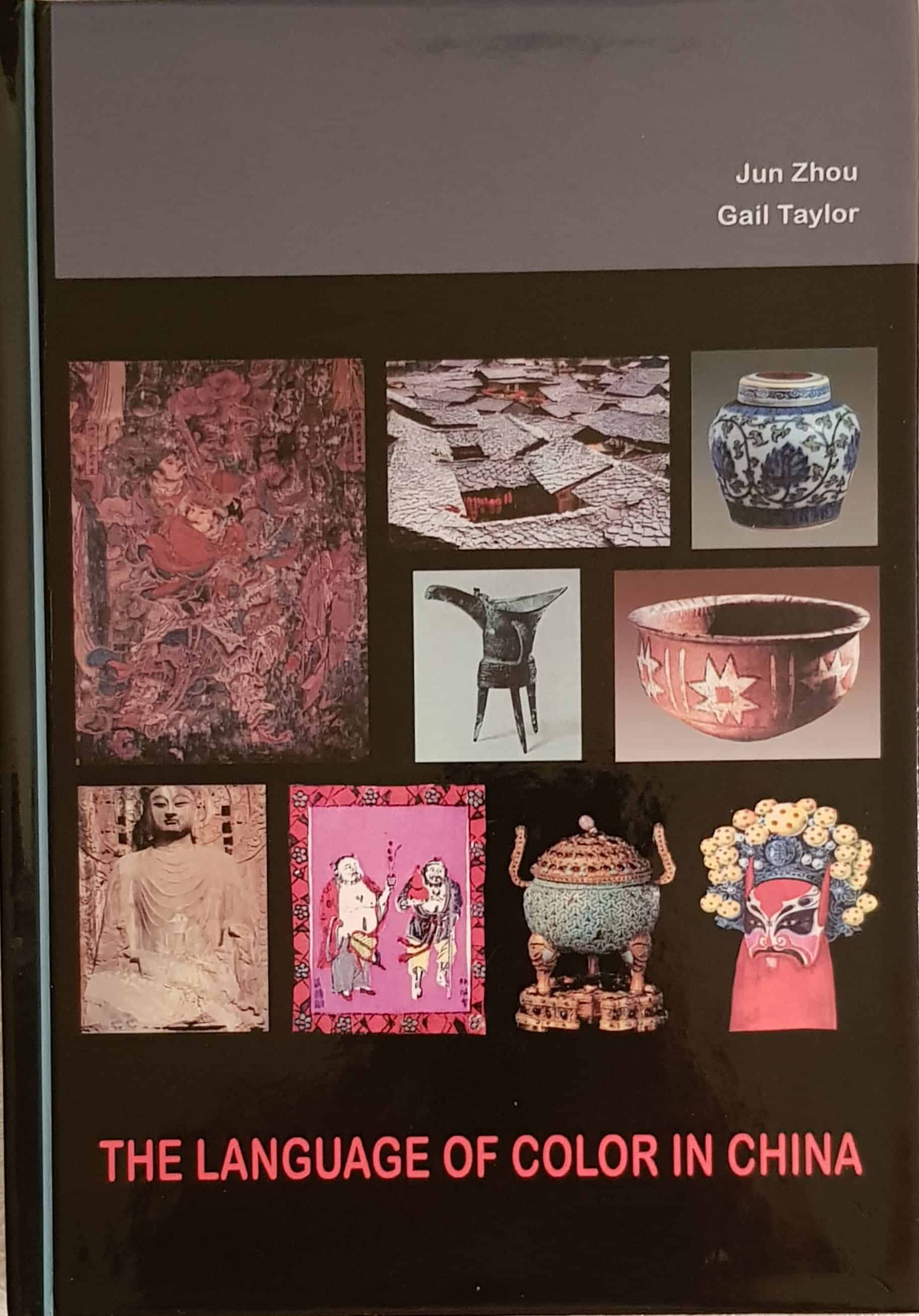



 I bought this bronze statue of Buddha about 10 years ago, in Hollywood Road, because I was strongly attracted by his face and by the gesture (Abhaya Mudra) of his right hand, meaning ‘do not be afraid’. 30 cm tall, his face was that of an Alien, a face which I had never seen before. Even the suit he is wearing looks that of a spaceman, then…that strange hairstyle, where is it from?
I bought this bronze statue of Buddha about 10 years ago, in Hollywood Road, because I was strongly attracted by his face and by the gesture (Abhaya Mudra) of his right hand, meaning ‘do not be afraid’. 30 cm tall, his face was that of an Alien, a face which I had never seen before. Even the suit he is wearing looks that of a spaceman, then…that strange hairstyle, where is it from?